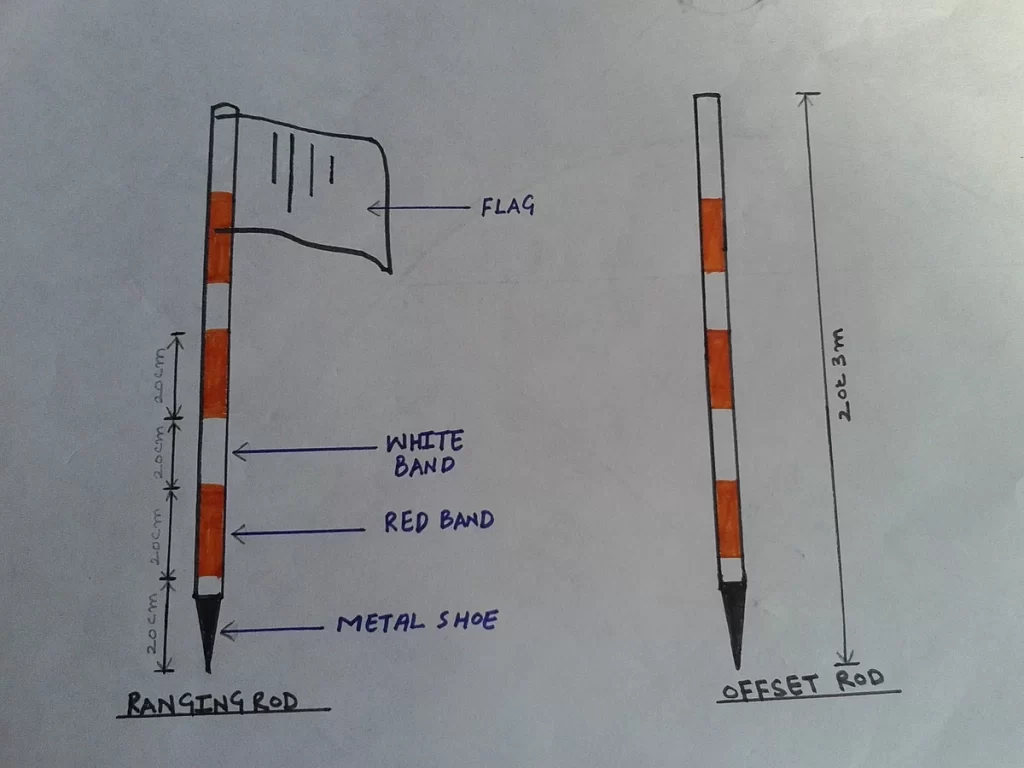
WAEC Agricultural Science Practical Specimen 2025/2026: In the upcoming WAEC Agricultural Science Practical examination for the year 2025/2026, students will encounter a range of interesting specimens that will test their practical knowledge in the field of agriculture. These specimens have been carefully selected to assess the candidates’ understanding of various aspects of agricultural practices.
WAEC Agricultural Science Practical Specimen 2025/2026
The Agricultural Science Practical Specimens for the 2025/2026 WAEC examination include a diverse array of items that represent different elements of agricultural science. These specimens are designed to evaluate students’ practical skills and their ability to apply agricultural concepts in real-world scenarios.
Let’s take a closer look at the specimens that will be featured in this year’s examination:
- SPECIMEN A – Ranging Pole;
- SPECIMEN B – Arrow;
- SPECIMEN C – Measuring Tape;
- SPECIMEN D – Wooden Peg.
- For specimens E, F, and G, you are requested to get some quantity of dry sand, dry clay (ground), and dry loam (ground) respectively.
- Get three capillary tubes, label each of them E, F, and G.
- Close the lower ends of each of the capillary tubes with a plug of cotton wool.
- Put the:
- (i) dry sand into the capillary tube labelled E;
- (ii) dry clay (ground) into the capillary tube labelled F;
- (iii) dry loam (ground) into the capillary tube labelled G.
- Shake or tap the ends of the capillary tubes to make sure that the particles are tightly packed/settled in each of the capillary tubes.
- Get a water trough and put water in it until it is half full.
- Set the capillary tubes securely in the trough.
- Leave the setup to stand for 24 hours before the examination.
- SPECIMEN H: Maize Weevil
- SPECIMEN I: Bean beetle
- SPECIMEN J: Grasshopper
- SPECIMEN K: Cotton stainer
- SPECIMEN L: Tilapia (whole and fresh)
- SPECIMEN M: Hay
- SPECIMEN N: Fish meal
The WAEC Agricultural Science Practical Specimens for 2025/2026 cover a wide range of topics within the field of agriculture. These specimens are carefully selected to assess students’ practical knowledge and their ability to apply agricultural concepts. Candidates need to study these specimens thoroughly and understand their significance in agricultural practices.
WAEC Agricultural Science Specimen and their Diagrams 2024
SPECIMEN A – Ranging Pole;

SPECIMEN B – Arrow
Detailed Explanation of the WAEC Agricultural Science Practical Specimen 2025/2026
- SPECIMEN A (Ranging Pole): Used for marking out straight lines on the ground in surveying and agricultural practices.
- SPECIMEN B (Arrow): Helps in marking positions when laying out a survey line with a chain or tape.
- SPECIMEN C (Measuring Tape): A flexible ruler used to measure distance or size.
- SPECIMEN D (Wooden Peg): Used to mark locations for planting or to hold positions in surveying.
For SPECIMENS E, F, and G, the procedure you’ve described is likely for an experiment to demonstrate the capillary movement of water in different soil types, which affects soil water retention and plant growth:
- SPECIMEN E (Dry Sand): Represents sandy soil, known for high drainage and low water retention.
- SPECIMEN F (Dry Clay): Represents clayey soil, which has high water retention but poor drainage.
- SPECIMEN G (Dry Loam): Represents loamy soil, which is an ideal balance of sand, silt, and clay, offering good water retention and drainage.
The remaining specimens are related to the study of pests, nutrition, and aquaculture:
- SPECIMEN H (Maize Weevil): A common pest that affects stored grains.
- SPECIMEN I (Bean beetle): Another pest that targets legumes like beans.
- SPECIMEN J (Grasshopper): An insect that can affect crops by feeding on the leaves.
- SPECIMEN K (Cotton stainer): A pest that damages cotton crops by staining the cotton bolls.
- SPECIMEN L (Tilapia): A common fish species used in aquaculture.
- SPECIMEN M (Hay): Dried grass or plants used as animal fodder.
- SPECIMEN N (Fish meal): Ground fish used as a high-protein animal feed.
FAQs
What are the specimens for the Agricultural Science Practical exam in WAEC 2025/2026?
Specimens A to D are surveying tools used in agricultural land measurement and mapping. The ranging pole is used to mark out straight lines on the ground, the arrow is used in conjunction with a chain or tape for marking positions, the measuring tape is for measuring distances, and the wooden peg is used for marking specific points on the land.
Specimens E, F, and G involve an experiment to demonstrate the capillary movement of water in soils, which is crucial for understanding water retention and its availability to plants. Students are required to pack dry sand into a capillary tube labeled E, dry clay into tube F, and dry loam into tube G, then observe the movement of water in these soils over a period of time.
Specimens H to N are various biological specimens. H is the maize weevil, a pest that attacks stored grains, while I is the bean beetle, which targets legumes. J is a grasshopper, known for its impact on crops, and K is the cotton stainer, a pest affecting cotton quality. L is a fresh tilapia, a common fish in aquaculture, M is hay, typically used as animal fodder, and N is fish meal, a high-protein feed used in animal husbandry.
Do I need to bring any materials to the exam?
No, all necessary materials and specimens will be provided during the exam.
Is there anything I can do to prepare beforehand?
While you won’t know the exact specimens, reviewing common agricultural practices, pests, and equipment can be helpful. You can also revise topics related to soil texture and water movement.
What is the purpose of the experiment with the capillary tubes (Specimens E, F, G)?
This experiment demonstrates the concept of capillary action, how water moves through different soil textures (sand, clay, loam).
What are Specimens H, I, J, and K (insects)?
These are examples of agricultural pests. You might be asked to identify them, describe their impact on crops, or suggest control methods
What are Specimens L, M, and N (fish and feed)?
Specimen L is a Tilapia, a common freshwater fish. Specimen M is hay, a type of animal feed. Specimen N is fish meal, another form of animal feed. You might be asked about their uses or importance in agriculture.
MORE WAEC SPECIMEN:
- All WAEC Practical Specimen 2023/2024
- WAEC Biology Practical Specimen 2025/2026
- WAEC Physics Practical Specimen 2025/2026
- WAEC Chemistry Practical Specimen 2025/2026
- WAEC Animal Husbandry Practical Specimen 2025/2026
- WAEC Fisheries Practical Specimen 2025/2026
- WAEC Data Processing Practical Specimen 2025/2026
- WAEC Computer Studies Practical Specimen 2025/2026
- WAEC Visual Art Practical Specimen 2025/2026
- WAEC Technical Drawing Practical Specimen 2025/2026
Conclusion
We wish all candidates the best of luck in the upcoming WAEC Agricultural Science Practical examination for 2025/2026. Remember to stay focused, study the specimens diligently, and apply your knowledge to excel in this practical assessment. Good luck with your preparations!

